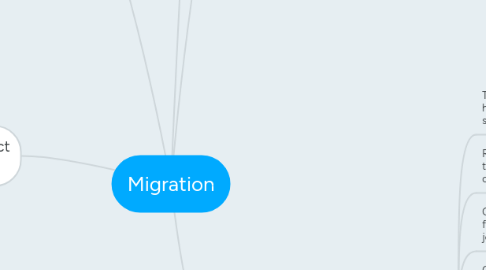
1. Field note
1.1. Haitians flee their country for hope of a better future.
1.2. Governments effect migration flows by opening and closing doors to migrants.
1.3. "wet foot, dry foot" policy (only for cubans)
1.4. perception is everything in migration
1.5. thousands of people are on there temporary visas to fill seasonal jobs in agriculture and forestry.
2. How do governments affect Migration?
2.1. The control of immigration, legal and illegal, the granting of asylum to asylum- seeking refugees, and fate of cross- boarder refugees, permanent and temporary,have become hot issues around the world.
2.2. Ex. Great Wall of China, The Berlin Wall, and fences along the Rio Grande.
2.3. Typically, the obstacles places on immigrants are legal, and not physical.
2.4. The U.S. and Australia are not the only countries that have restrictive immigration.
2.5. Selective immIgration: people with criminal records, poor health, etc. are not allowed into a country.
2.6. "Operation Liberty Shield" (after 9/11)
3. What is Migration?
3.1. Human Movement diffuses ideas and innovations.
3.2. Mobility has increased markedly over last
3.3. 3 different types of movement:
3.3.1. Cyclic movement: shorter periods away from home
3.3.1.1. A majority of people have a daily routine that takes them through a regular sequence of short moves within their local area.
3.3.1.1.1. Commuting, seasonal movement, and nomadism (matter of survival)
3.3.2. periodic movement: longer periods away from home
3.3.2.1. one common way of periodic movement is migrant labor.
3.3.2.2. Transhumance: system of pastoral farming where ranchers move livestock according to the seasonal availability of pastures.
3.3.2.3. Military service.
3.3.3. Migration: degree of performance the other two do not; with migration, the mover may never return "home".
3.3.3.1. The process of migration involves the long- term relocation of an individual, a household , or a larger group to a new locale outside the community of origin.
3.3.3.1.1. immigration, emigration and internal migration.
4. Why do people Migrate?
4.1. Voluntary action, involuntary action.
4.1.1. The decision to migrate happens to an individual migrant within a household , place. country, region, and world, each of which has its own dynamics.
4.2. The intensity of migration flow varies with such factors as similarities between the source and the destination.
4.3. Push and pull factors.
4.4. Each country around the world decides who is allowed to migrate to their country and under what circumstances.
4.5. Poverty is a huge cause of migration.
4.6. Power relationships already embedded in society enable the flow of migrants around the world. (nanny's)
4.6.1. Race is a factor in hiring a migrant worker.
4.7. Oppressive regimes have engendered migration streams. (political circumstances)
4.8. Environmental conditions: earthquakes, hurricanes.
4.9. Culture and traditions
4.9.1. People who fear that their culture and traditions will not survive a major political transition, and who are able to migrate to places they perceive as safer, will often do so.
4.10. Technological advances
4.10.1. Today news travels faster than ever, about job opportunities, and ways to reach desired destinations.
5. Where do people Migrate?
5.1. The past five centuries have witnessed human migration on an unprecedented scale.
5.1.1. 1500s-1800s: tons of european emigration
5.2. Regional scale: migrants go to neighboring countries to take advantage of short- term economic opportunities, cultural connections , or to flee political conflict/ war.
5.2.1. Regional migration flows also center on reconnecting cultural groups across boarders. (Reconnection of cultural groups)
5.3. Cities in the developing world are typically where most foreign investment goes, and where a vast majority of jobs are located.
5.4. Conflict and war
5.4.1. At the end of World War 2, 15 million Germans migrated westward from their homes in eastern Europe, either voluntarily or because they were forced to leave.
5.5. Guest workers: often work as agricultural laborers or in service industries, including hotels, restaurants, and tourist attractions.
5.5.1. many employers abuse them, because many guest workers are not aware of their rights.
5.5.2. Guest workers are legal, documented migrants who have work visas, usually short term.
5.5.3. Guest workers change the ethnic, linguistic, and religious aspect, where ever they go.
5.5.4. Often the destination governments extend the visas if certain sectors of the economy still need laborers.
5.6. Refugees: The vast majority do not make it far from their home.
5.6.1. The United Nations agency is the key organization supporting refugees.
5.6.2. When a refugee meets the official criteria, he/she becomes eligible for assistance.
5.6.3. The impact of refugee flows is certainly felt most upon the poorest countries in the world.
